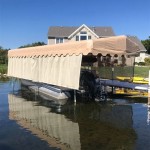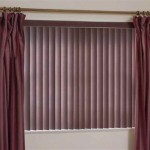What Is The Purpose of Air Curtains?
Air curtains, also known as air doors, are specialized devices engineered to create a seamless barrier of air over an opening. This barrier is typically implemented to separate two distinct environments, most commonly at doorways but also at other entry points such as loading docks or pass-through windows. The fundamental principle governing the operation of an air curtain involves a powerful fan that blows a controlled stream of air across the opening. This stream of air acts as an invisible wall, preventing the exchange of air, temperature, and airborne contaminants between the two spaces.
The applications of air curtains are remarkably diverse, spanning numerous industries and commercial settings. They are frequently observed in retail establishments, restaurants, supermarkets, manufacturing plants, warehouses, cold storage facilities, and hospitals. The adaptability of air curtains stems from their ability to address a multitude of operational challenges, ranging from energy conservation and climate control to hygiene management and pest control.
While the basic concept of an air curtain is relatively straightforward, the underlying engineering and design considerations are complex. Factors such as the size and configuration of the opening, the prevailing wind conditions, temperature differentials between the two environments, and the specific application requirements all influence the selection and installation of an appropriate air curtain system. Modern air curtains often incorporate advanced features such as adjustable airflow velocity, directional control, and integrated heating or cooling elements to optimize performance and energy efficiency.
Maintaining Temperature Control and Energy Efficiency
One of the primary functions of an air curtain is to maintain temperature control within a building or specific area. This is particularly critical in environments where frequent opening and closing of doors or large openings would otherwise lead to significant heat loss or gain. In retail settings, for example, an air curtain installed at the entrance can prevent cold air from rushing in during the winter months, thereby reducing heating costs and enhancing customer comfort. Conversely, during the summer, it can prevent the influx of hot, humid air, minimizing the load on air conditioning systems and maintaining a comfortable indoor environment.
The effectiveness of an air curtain in maintaining temperature control directly translates into energy savings. By reducing the reliance on heating and cooling systems, air curtains contribute to a smaller carbon footprint and lower utility bills. This is particularly important for businesses striving to improve their environmental sustainability and reduce operational costs. The return on investment for an air curtain system can be substantial, especially in high-traffic areas with frequent door openings.
Moreover, air curtains can help to create more consistent temperature zones within a building. This is beneficial in environments where sensitive materials or equipment are stored, requiring precise temperature control. In cold storage facilities, for instance, air curtains are essential for preventing the ingress of warmer air, which can compromise the integrity of perishable goods. The consistent temperature maintained by the air curtain contributes to product quality, reduces spoilage, and minimizes waste.
The design of an air curtain significantly impacts its ability to maintain temperature control. Factors such as the air velocity, nozzle design, and installation height all play a role in creating an effective barrier. Properly sized and installed air curtains can significantly reduce the amount of air exchange between the inside and outside environments, maximizing energy efficiency and temperature stability.
Preventing the Entry of Insects, Dust, and Other Contaminants
Beyond temperature control, air curtains serve as a vital defense against the entry of insects, dust, and other airborne contaminants. This is particularly important in environments where hygiene and cleanliness are paramount, such as food processing plants, hospitals, and pharmaceutical manufacturing facilities. The strong stream of air generated by the air curtain acts as a physical barrier, preventing insects from flying into the building and keeping dust and debris from being carried in by the wind or foot traffic.
In the food industry, the presence of insects can lead to product contamination and regulatory violations. Air curtains provide an effective and non-toxic method of pest control, reducing the need for chemical treatments and creating a safer environment for food production. By preventing insects from entering the building, air curtains help to maintain product quality, reduce the risk of foodborne illnesses, and protect the reputation of the business.
Similarly, in hospitals and healthcare facilities, maintaining a clean and sterile environment is crucial for patient safety. Air curtains can help to prevent the spread of airborne pathogens and reduce the risk of hospital-acquired infections. By filtering out dust and other contaminants, air curtains contribute to improved air quality and a healthier environment for patients and staff.
The effectiveness of an air curtain in preventing the entry of contaminants depends on several factors, including the air velocity, nozzle design, and the overall cleanliness of the surrounding environment. Regular maintenance and cleaning of the air curtain are essential to ensure optimal performance. Additionally, the use of air filters can further enhance the air curtain's ability to remove particulate matter from the air stream.
Improving Employee and Customer Comfort
Air curtains play a significant role in enhancing the comfort of employees and customers in various commercial settings. By maintaining a consistent indoor temperature and preventing drafts, air curtains create a more pleasant and inviting environment. This is particularly important in retail establishments, where customer comfort can directly impact sales and customer loyalty.
In cold climates, air curtains can prevent cold drafts from entering the building, making the shopping experience more comfortable for customers. Similarly, in hot climates, air curtains can prevent the influx of hot, humid air, reducing the need for excessive air conditioning and creating a more comfortable shopping environment. A comfortable and inviting environment encourages customers to stay longer and spend more money.
For employees who work near doorways or large openings, air curtains can provide significant relief from temperature fluctuations and drafts. This can lead to improved employee morale, reduced absenteeism, and increased productivity. A comfortable and healthy work environment is essential for attracting and retaining talented employees.
The design and placement of the air curtain can also contribute to improved comfort levels. Angled nozzles can be used to direct the airflow in a specific direction, preventing drafts and minimizing noise levels. The height and width of the air curtain should be carefully selected to ensure that the entire opening is effectively covered. Proper installation and maintenance are crucial for maximizing the comfort benefits of an air curtain.
Beyond the immediate benefits of temperature control and draft prevention, air curtains can also contribute to improved air quality, which further enhances comfort levels. By filtering out dust and other contaminants, air curtains can reduce the risk of allergies and respiratory problems, creating a healthier and more comfortable environment for everyone.
In summary, the purpose of air curtains extends beyond a single function. They are multifaceted devices offering benefits ranging from energy conservation and hygiene control to improved comfort and enhanced sustainability. The specific advantages and optimal use of an air curtain will vary depending on the application and environment, making careful consideration of design, installation, and maintenance essential for maximizing the return on investment.

Air Curtains What Is An Curtain 101 Berner

What Is An Air Curtain Understanding Its Function And Benefits

10 Reasons To Install An Air Curtain In Your Premises

How Air Curtains Work

Air Curtain S Horizontal Vertical Ambient Heated

What Is Air Curtain The Magic Of Kdk Curtains

Advantages And Benefits Of Air Curtains

What Is An Air Curtain Working Benefits Where To Use It

What Is Air Curtain The Magic Of Kdk Curtains

What Is Air Curtain The Magic Of Kdk Curtains








